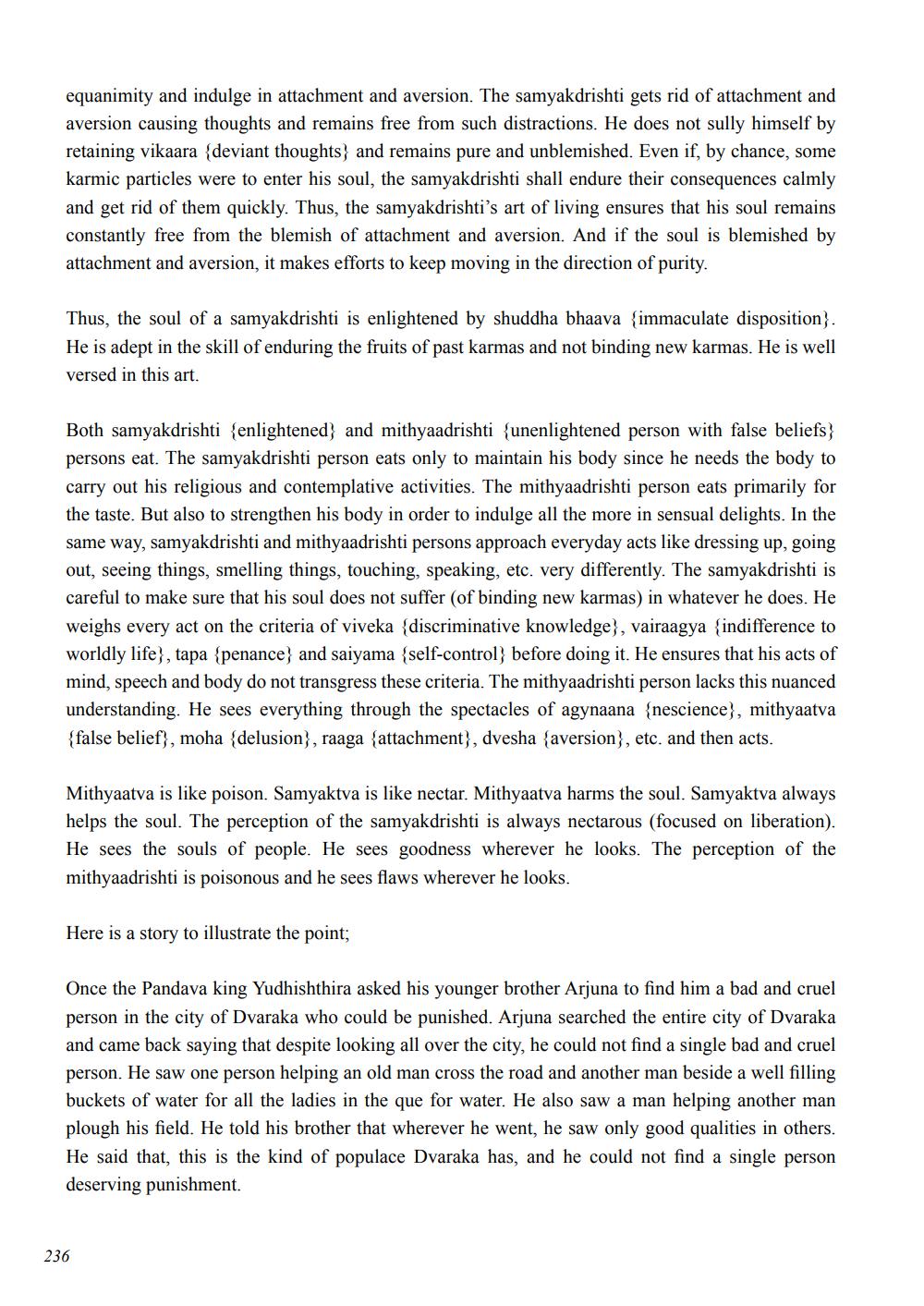________________
equanimity and indulge in attachment and aversion. The samyakdrishti gets rid of attachment and aversion causing thoughts and remains free from such distractions. He does not sully himself by retaining vikaara (deviant thoughts and remains pure and unblemished. Even if, by chance, some karmic particles were to enter his soul, the samyakdrishti shall endure their consequences calmly and get rid of them quickly. Thus, the samyakdrishti's art of living ensures that his soul remains constantly free from the blemish of attachment and aversion. And if the soul is blemished by attachment and aversion, it makes efforts to keep moving in the direction of purity.
Thus, the soul of a samyakdrishti is enlightened by shuddha bhaava {immaculate disposition. He is adept in the skill of enduring the fruits of past karmas and not binding new karmas. He is well versed in this art.
Both samyakdrishti {enlightened and mithyaadrishti unenlightened person with false beliefs persons eat. The samyakdrishti person eats only to maintain his body since he needs the body to carry out his religious and contemplative activities. The mithyaadrishti person eats primarily for the taste. But also to strengthen his body in order to indulge all the more in sensual delights. In the same way, samyakdrishti and mithyaadrishti persons approach everyday acts like dressing up, going out, seeing things, smelling things, touching, speaking, etc. very differently. The samyakdrishti is careful to make sure that his soul does not suffer (of binding new karmas) in whatever he does. He weighs every act on the criteria of viveka {discriminative knowledge), vairaagya indifference to worldly life), tapa (penance and saiyama {self-control) before doing it. He ensures that his acts of mind, speech and body do not transgress these criteria. The mithyaadrishti person lacks this nuanced understanding. He sees everything through the spectacles of agynaana (nescience), mithyaatva {false belief), moha delusion}, raaga {attachment}, dvesha {aversion}, etc. and then acts.
Mithyaatva is like poison. Samyaktva is like nectar. Mithyaatva harms the soul. Samyaktva always helps the soul. The perception of the samyakdrishti is always nectarous (focused on liberation). He sees the souls of people. He sees goodness wherever he looks. The perception of the mithyaadrishti is poisonous and he sees flaws wherever he looks.
Here is a story to illustrate the point;
Once the Pandava king Yudhishthira asked his younger brother Arjuna to find him a bad and cruel person in the city of Dvaraka who could be punished. Arjuna searched the entire city of Dvaraka and came back saying that despite looking all over the city, he could not find a single bad and cruel person. He saw one person helping an old man cross the road and another man beside a well filling buckets of water for all the ladies in the que for water. He also saw a man helping another man plough his field. He told his brother that wherever he went, he saw only good qualities in others. He said that, this is the kind of populace Dvaraka has, and he could not find a single person deserving punishment.
236




